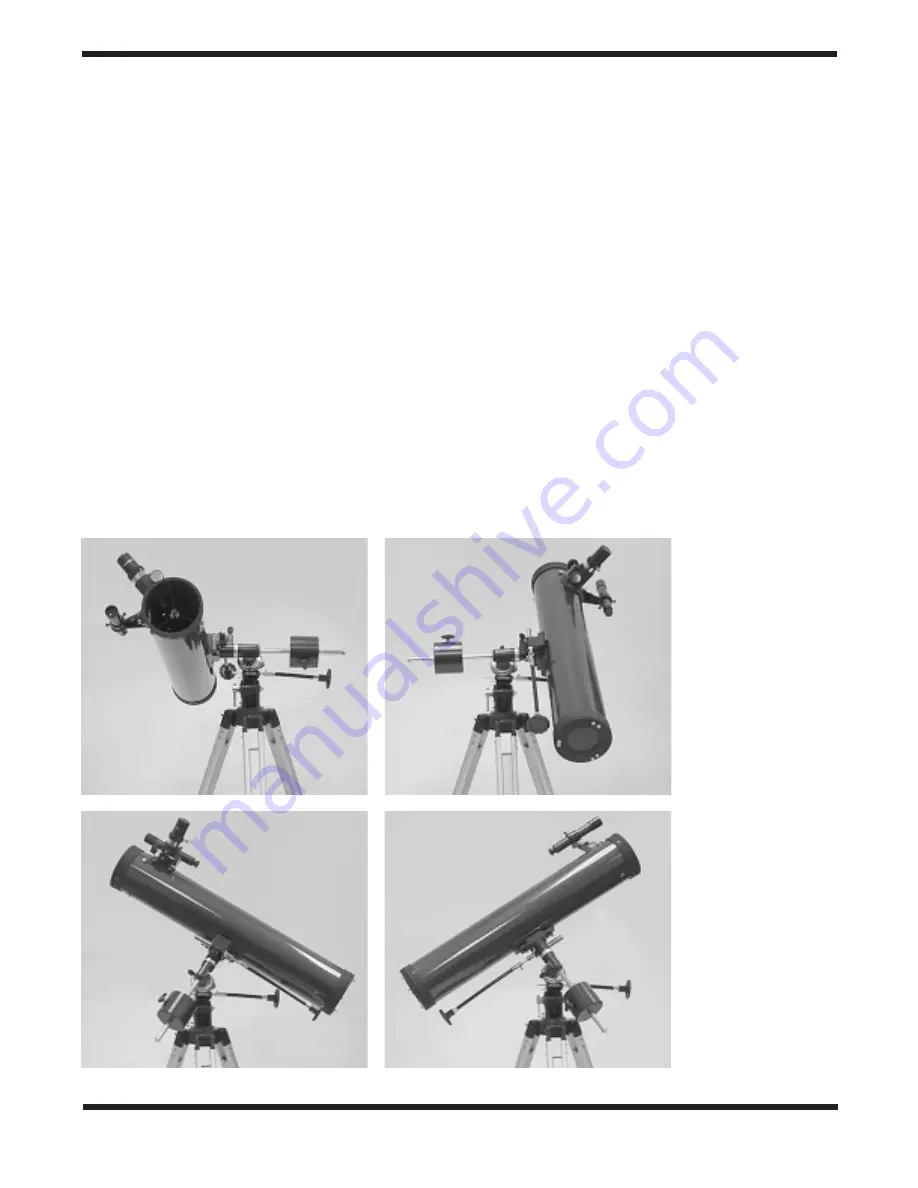
8
Figure 6. This illus-
tration shows the
telescope pointed in
the four cardinal
directions: (a) north,
(b) south, (c) east,
(d) west. Note that
the tripod and mount
have not been
moved; only the tele-
scope tube has been
moved on the R.A.
and Dec. axes.
a.
b.
c.
d.
Optional Electronic Drives for Automatic Tracking
An optional DC electronic drive can be mounted on the R.A.
axis of the equatorial mount to provide hands-free tracking.
Objects will then remain stationary in the field of view without
any manual adjustment of the R.A. slow-motion control cable.
Understanding the Setting Circles
The setting circles on an equatorial mount enable you to
locate celestial objects by their “celestial coordinates”. Every
object resides in a specific location on the “celestial sphere”.
That location is denoted by two numbers: its right ascension
(R.A.) and declination (Dec.). In the same way, every location
on Earth can be described by its longitude and latitude. R.A.
is similar to longitude on Earth, and Dec. is similar to latitude.
The R.A. and Dec. values for celestial objects can be found in
any star atlas or star catalog.
The mount’s R.A. setting circle is scaled in hours, from 1
through 24, with small marks in between representing 10-
minute increments. The numbers closest to the R.A. axis gear
apply to viewing in the Southern Hemisphere, while the num-
bers above them apply to viewing in the Northern
Hemisphere.
The Dec. setting circle is scaled in degrees, with each mark
representing 2.5° increments. Values of Dec. coordinates
range from +90° to -90°. The 0° mark indicates the celestial
equator. When the telescope is pointed north of the celestial
equator, values of the Dec. setting circle are positive, while
when the telescope is pointed south of the celestial equator,
values of the Dec. setting circle are negative.
So, the coordinates for the Orion Nebula listed in a star atlas
will look like this:
R.A. 5h 35.4m Dec. -5° 27'
That’s 5 hours and 35.4 minutes in right ascension, and -5
degrees and 27 arc-minutes in declination (there are 60 arc-
minutes in 1 degree of declination).
Before you can use the setting circles to locate objects, the
mount must be correctly polar aligned, and the R.A. setting circle
must be calibrated. The Dec. setting circle has been permanent-
ly calibrated at the factory, and should read 90° whenever the
telescope optical tube is parallel with the R.A. axis.
Calibrating the Right Ascension Setting Circle
1. Identify a bright star in the sky near the celestial equator
(Dec. = 0°) and look up its coordinates in a star atlas.
2. Loosen the R.A. and Dec. lock knobs on the equatorial
mount, so the telescope optical tube can move freely.

























